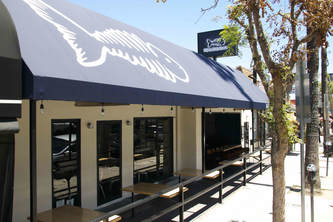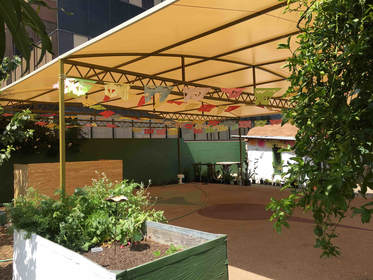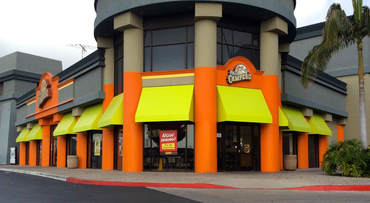Fire season is here, and it is hot, hot, hot! That means you need to be aware and conscientious about fire hazards and prevention. For businesses and homeowners, this means thinking about your awing or patio cover and the material it’s made from.
 Firesist Fire Retardant Fabric
Firesist Fire Retardant Fabric
Fire-resistant and fire-retardant awning fabrics are designed to withstand fire and help keep your awning from going up in flames. For example, using specialty fabrics like Trivantage’s Firesist product can help you have peace of mind.
So, what is the difference between a fire-resistant and a fire-retardant fabric. Fire-retardant textiles are coated with chemicals or solutions. Fire-resistant fabrics are inherently nonflammable; the fibers naturally don’t burn.
So, what is the difference between a fire-resistant and a fire-retardant fabric. Fire-retardant textiles are coated with chemicals or solutions. Fire-resistant fabrics are inherently nonflammable; the fibers naturally don’t burn.
 Serge Ferrari 502 Satin Fire Retardant Fabric
Serge Ferrari 502 Satin Fire Retardant Fabric But, how does a fire-resistant or fire-retardant awning fabric work? Here’s a quick run-down:
- The fire-retardant fabrics are specially coated with a substance which prevents flammability. The coating typically lasts the life of the textile. Sometimes, a coating can also assist in self-extinguishing after the fire source has been removed.
- Inherent fire resistance in a fabric means the fibers of the material are naturally nonflammable; meaning the textile is difficult to ignite or burn. Some inherently fire-resistant fabrics include: wool and silk.
- Fire-retardant coatings don’t ruin your fabric; this is a misconception. In fact, for most awning fabrics, using a fire-retardant textile is important because you don’t want a wool or silk product for your awning; it would probably deteriorate quickly.
 Serge Ferrari 502 Satin Fire Retardant Fabric
Serge Ferrari 502 Satin Fire Retardant Fabric Fire-retardant awnings are typically made with textiles like Sunbrella, Trivantage, or other specialty fabric suppliers who specialize in these types of products. It’s important to know and understand that using a fire-retardant fabric for your awning project can help you save your business or home by preventing flames from spreading. (Just think, if you made the mistake of having a flame or bbq near your awning and it caught fire, how quickly that could spread. But with a fire-retardant fabric, that flame won’t spread).
Remember, consult your local awning shop about fire-retardant and fire-resistant fabrics and what’s best for you and your next project. Now that you know a little more about fire resistance and awnings, let us know how we can help you with your next shade structure project. For more information about awnings and other shade structures, feel free to contact us at American Awning & Blind Co. by visiting us at http://americanawningabc.com. (Our California Contractors License is #999050). Or give us a call at 800-654-5933. You can also email us at info@americanawningabc.com.
